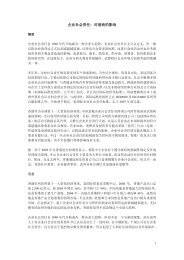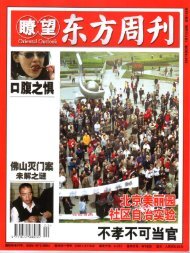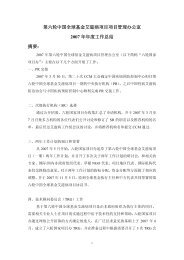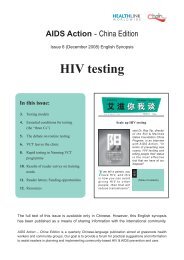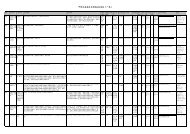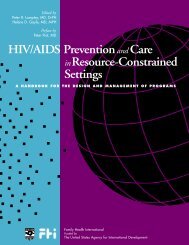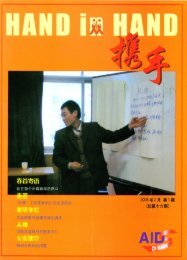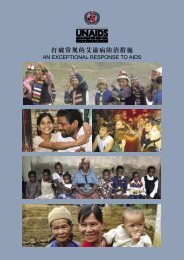The Training of Trainers Manual - UNFPA
The Training of Trainers Manual - UNFPA
The Training of Trainers Manual - UNFPA
Create successful ePaper yourself
Turn your PDF publications into a flip-book with our unique Google optimized e-Paper software.
Ask each group to present one <strong>of</strong> their images to the entire group and give their answers to the questions<br />
about it. Ask the other participants if they agree.<br />
Closure<br />
Point out that this exercise provides an opportunity to analyse the impact <strong>of</strong> one information source –<br />
the print media – on gender stereotypes and beliefs.<br />
Explain that it is possible to interpret images from different points <strong>of</strong> view; not everyone receives the<br />
same ‘message’ from an image. We may receive a different message than was intended by those who<br />
produced the image. <strong>The</strong> common experience that all people share is that we are influenced in our<br />
ideas about ‘proper’ or ‘desirable’ characteristics and behaviours for women and men by such images,<br />
<strong>of</strong>ten without realizing it.<br />
Point out that both adolescents and adults continue to learn about gender roles and responsibilities in<br />
this way and that these lessons are important in determining our sexual and reproductive behaviour as<br />
well as the consequences <strong>of</strong> that behaviour.<br />
Emphasize that challenges to gender stereotypes are good – for example, advertisements showing<br />
women playing sports or men caring for children demonstrate that both men and women can carry out<br />
such activities.<br />
Point out that media advertisements try to get people to buy products, and they <strong>of</strong>ten do this by<br />
reinforcing gender stereotypes. However, as ideas about women’s and men’s roles change in society, the<br />
media may also challenge gender stereotypes in a harmful way. For example, tobacco advertisements<br />
specifically target women by appealing to their desire for ‘adventure’ or ‘independence’. We need to be<br />
aware <strong>of</strong> the health consequences <strong>of</strong> the messages we see, even if they challenge gender stereotypes<br />
that we want to change.<br />
Exercise: Singles party weekend<br />
Objectives<br />
To have participants become more motivated to protect themselves from exposure to<br />
HIV infection<br />
To increase their awareness about how easily HIV transmission can become a reality for<br />
someone as a result <strong>of</strong> behavioural choices<br />
Time<br />
30-40 minutes<br />
Materials<br />
Four small pieces <strong>of</strong> blank paper (about 3 square cm) for each participant to represent<br />
hotel room keys, four to eight pieces <strong>of</strong> paper with HIV written on them in small letters,<br />
pens and pencils, a cassette or disc player with tapes or discs <strong>of</strong> dance music<br />
188 <strong>Training</strong> <strong>of</strong> <strong>Trainers</strong> <strong>Manual</strong>




